Next Generation
Planet, Class-H

Rigel XII (TOS-03)
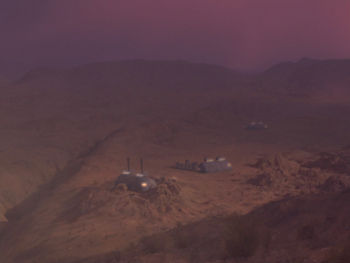
Rigel XII Surface (TOS-03)
Desert. Age ranged from 4-10 billion years. Diameter was 8000 to 15,000 km. Typically located in the Hot Zone, Ecosphere or Cold Zone of a planetary system. Surface was hot and arid, with little or no surface water, atmosphere may contain heavy gases and metal vapors. May contain drought- and radiation-resistant plants and animal life.[1]
Class-H Planets:
References
Planet, Class-D
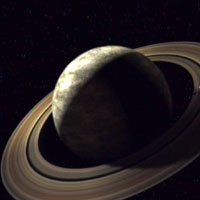
Class-D Planet (VOY-109)
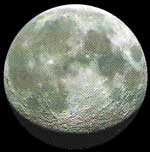
Moon (STSC)
Asteroid/Moon. Age ranged from 2-10 billion years. Diameter was 100 to 1000 km. Typically located in the Hot Zone, Ecosphere or Cold Zone of a planetary system, primarily in orbit of larger planets or in asteroid belts. Surface was barren and cratered, atmosphere was nonexistent or extremely tenuous. No native life forms.[1]
Class-D Planets:
References
Planet, Class-C
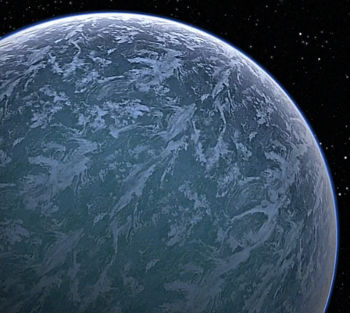
Psi-2000 (TOS-06)
Geoinactive. Age ranged from 2-10 billion years. Diameter was 1000 to 10,000 km. Typically located in the Ecosphere or Cold Zone of a planetary system. Surface was low temperature, atmosphere was frozen. No native life forms.[1]
Class-C Planets:
References
Cytherian System
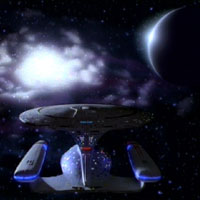
Cytherian System (TNG-193)
A system located near the center of the Milky Way, some 30,000 light years from the closest Federation point, and home to a race of curious galactic explorers who preferred to remain in their home system, bringing other species to them.[1]
References
Cosmic String Fragment
A swarm of two-dimensional beings, which was 107 km long and one proton wide, with gravitational fields as powerful as a large black hole or 100 smaller stars, was instinctively drawn to a cosmic string fragment. The fragment emitted a characteristic set of subspace frequencies as atomic particles decayed along its event horizon, which were duplicated by the U.S.S. Enterprise NCC-1701-D‘s parabolic dish to confuse the two-dimensional beings and halt them long enough to break free of their graviton field wake.[1]
References
Cordannas System
System with a white dwarf star and a natural source of vertion particles, which were used to save an emergent holodeck lifeform in 2370.[1]
References
Cheron
Site of a battle with the United Federation of Planets in the Omicron Gruis System,[3] which was considered a “humiliating” defeat by the Romulans, according to Admiral Jarok. It led to the creation of the Neutral Zone and thus likely the climax of the Romulan War in 2161.[2] By coincidence, it was also the name of a long-dead world where a group of two advanced races destroyed each other over racial bigotry, not encountered by the UFP until 2268.[1]
References
- 1. “Let That Be Your Last Battlefield.” Star Trek, Episode 70. Television. 10 January 1968.
- 2. “The Defector.” Star Trek: The Next Generation, Episode 158. Television. 1 January 1990.
- 3. Star Trek: Star Charts. Book. October 2002. Pocket Books.
Cerebus II
A planet whose natives developed a rejuvenation process for the body, although it is often accompanied by pain and a high mortality rate. The Cerebrusians usually kept it from outworlders, but shared the secret with Admiral Mark Jameson after he negotiated a treaty for the planet.[1]
References
Celtris III

Celtris III (TNG-236)
Cardassian border planet erroneously thought to have a subterranean development site for metagenic weapons.[1] The base was later found to be an elaborate hoax to capture Captain Picard.[2]
References
Categories
- Animated Series (60)
- Articles (28)
- Books (447)
- Cast & Crew (79)
- Comics (22)
- DS9 (328)
- Early Voyages (125)
- Education (5)
- Enterprise (373)
- Excelsior (36)
- Food (19)
- Games (223)
- Klingon (70)
- Library (1,543)
- Logs (593)
- Lost Era (55)
- Medicine (18)
- Merrimac (1)
- Mirror (35)
- Miscellaneous (13)
- New Frontier (54)
- Next Generation (635)
- Original Series (681)
- Personnel (436)
- Places (369)
- Politics (12)
- Recreation (10)
- SCE (41)
- Science (1)
- Shatnerverse (9)
- Ships (455)
- Site Updates (98)
- Starfleet Academy (86)
- Stargazer (42)
- STO (61)
- Technology (45)
- Titan (59)
- To Boldly Go (1)
- TV/Film (214)
- Uncategorized (4)
- Vanguard (76)
- Voyager (236)
- Weapons (27)
- Xenology (54)